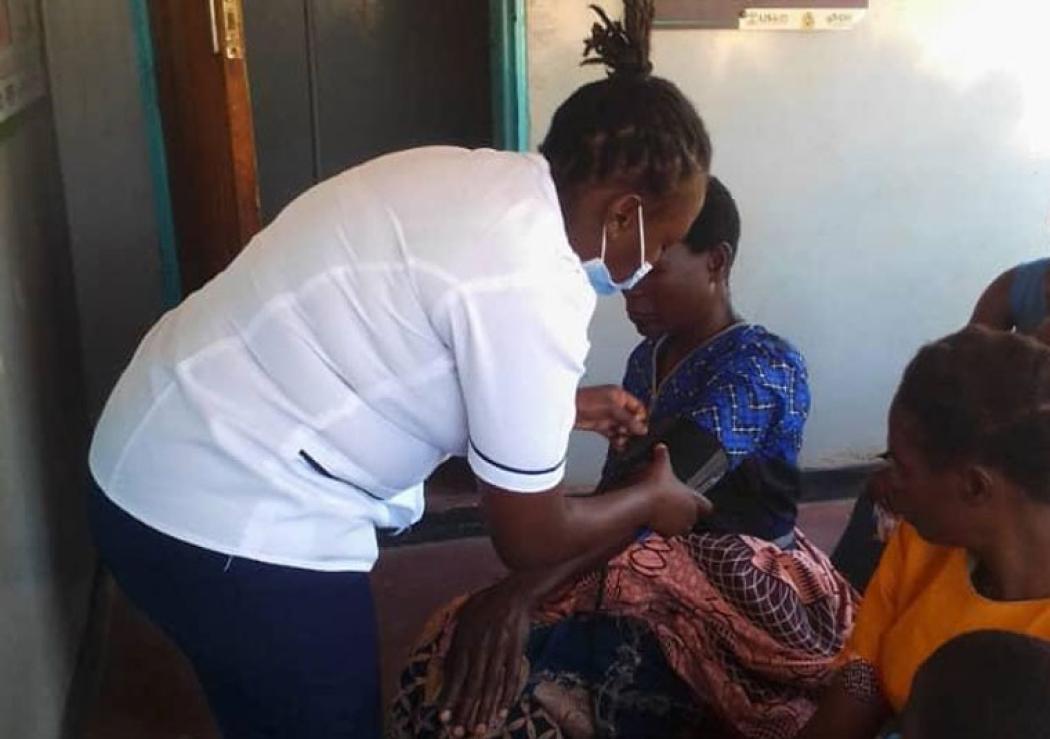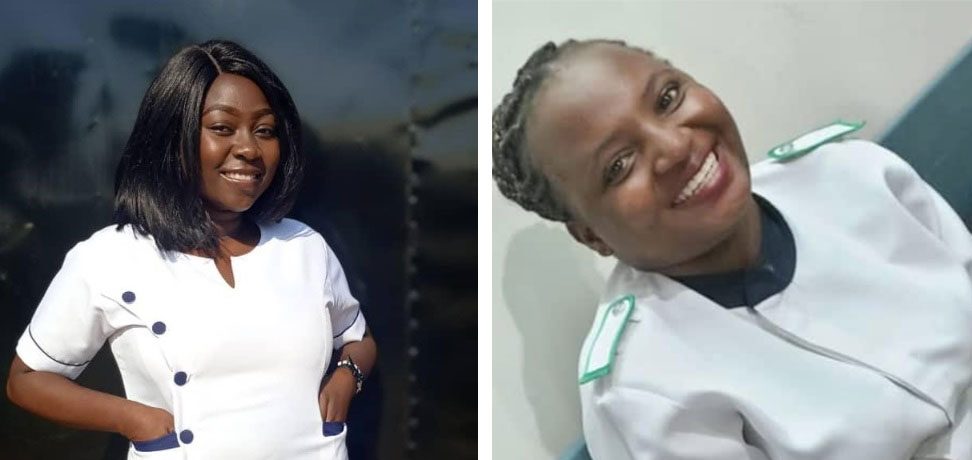Nursing Fellows Give Their All in Malawi to Fill Health Workforce Gaps

Nurse Chikondi Ndalama, a nurse fellow in Malawi supported by GAIA Global Health and USAID, attends to patients. Photo courtesy of GAIA Global Health.
Achieving Universal Health Coverage (UHC) is dependent on a well-trained, supported, and equitably distributed nursing workforce. In low- and middle-income countries, nurses form the backbone of health service delivery and in rural, hard-to-reach areas, they are often the only providers of care.
The WHO estimates that nine million more nurses and midwives are needed to realize UHC by 2030. A recent study from University of Washington’s Institute for Health Metrics and Evaluation more than tripled this projection, reporting that nurses and midwives represent 71% (30.6 million) of the estimated 43 million health workers needed to reach global UHC targets.
Governments and donors need to urgently increase investment to ensure nurse retention.
Malawi has seven nurses per 10,000 people (compared to 50 in South Africa and 157 in the US) and 55% of public sector nursing positions are vacant—straining health systems, particularly in rural areas, where 83% of Malawi’s 19 million residents live. Despite these health worker shortages, many new nursing graduates are unable to find work due to constrained government budgets for human resources for health (HRH).
In response, GAIA Global Health partners with the Ministry of Health (MOH), with funding from USAID, to fill HRH gaps through short-term paid fellowships in overstretched district hospitals and rural health facilities for nurse graduates to hone their skills. During these year-long fellowships, nurses receive training in antiretroviral therapy (ART), Integrated Management of Childhood Illness (IMCI) and Maternal, Newborn and Child Health (MNCH)—priority areas identified by the MOH with critical health worker gaps. GAIA advocates for the MOH to absorb fellows in the public sector, but funding challenges persist.
Current fellows, Chikondi Ndalama and Kimberley Msanyama, shared thoughts about their fellowship experience and challenges they face as nurses in Malawi. Their insights reveal that health workers alone will not solve global workforce shortages. Governments and institutional donors need to urgently increase investment to improve working conditions and increase availability of essential resources to ensure nurse retention and continued progress toward UHC.

Chikondi Ndalama (left) and Kimberley Msanyama (right) are registered nurse-midwives working in Kasungu and Thyolo Districts. They are two of 146 fellows supported by GAIA Global Health and USAID to date as part of a five-year investment to close health workforce gaps in Malawi. Photos courtesy of GAIA Global Health.
Q: What health service gaps have you experienced during your fellowship?
Chikondi: Limited resources, heavy workloads, poor network communication and bad roads. Before I started, there wasn’t a licensed nurse [at the health facility]. A community midwife started shortly before me, but only because I was coming and could supervise her.
Kimberley: Resource and medication shortages, bad recordkeeping, and knowledge gaps. There aren’t enough nurses. There are only two nurses in my department, which includes the medical and surgical wards. Ideally, there would be three to four nurses per ward. I take care of the medical ward alone. All of the beds are usually full.
Q: How has your role improved service delivery?
Chikondi: Before, only basic family planning services were provided. Patients had to go to a monthly outreach clinic or traveled more than ten kilometers one-way [often on foot] to access other services. Now, antenatal, postnatal, and family planning services are fully functioning.
Pregnant women were often coming presenting with malaria and anemia. Now, they’re healthy because they’re taking their preventative drugs and supplements. Whenever patients notice something that doesn’t seem normal, they immediately come in. What we’re teaching them about danger signs is sticking.
I’ve also seen improvements after implementing what I’ve learned in training. For example, after the MNCH training, we transitioned from focused antenatal care to WHO guidelines. Now, we treat every antenatal woman as high-risk.
Kimberley: Resource availability has improved. Whenever something is out-of-stock, I inform my supervisor, search for resources myself and regularly push management. If medication is available at the hospital, you’ll find it in my ward now.
Recordkeeping has improved after pushing for the use of treatment charts, often left blank previously. I’ve filled knowledge gaps by sharing what I’ve learned in fellow training. For example, I shared revised ART guidelines with my colleagues through our WhatsApp forum and proposed posting them in the ward so that nurses who weren’t trained can easily access these resources.
Q: What’s your greatest fellowship success?
Chikondi: Now, I work independently without hiccups. I’ve grown as a nurse because I supervise staff and someone is looking up to me.
Kimberley: Reducing patient death through improved use of treatment charts and by introducing what we call a mini high-dependency unit, whereby we isolate critically ill patients in need of close monitoring. When they’re identified, they’re moved to a separate area where vital signs are monitored twice hourly. Before, there was a lot of death because critical patients were mixed with others, making follow-up difficult. Some would die without staff knowing. We used to go to the mortuary nearly every day. Now, we go maybe once per week, and it’s often for unavoidable deaths.
Q: How can nurses be best supported?
Chikondi: Balancing the workforce and having enough resources in every department, be it big or small.
Kimberley: When nurses graduate, they need employment. Once employed, they need resources to provide quality care to patients.
Q: What would you change about Malawi’s health system?
Chikondi: Standardized health care. Every patient should be offered the same health care, whether it’s in the public or private sector.
Kimberley: Government nursing recruitment. I would prioritize hiring nurses working part-time at public facilities, because they are working really hard for very little pay.
Q: What advice do you have for new nurses entering the workforce?
Chikondi: Work with passion and put your patients first.
Kimberley: Treat patients how you want to be treated when you’re sick. Despite staffing and resource shortages, give it your all. The tricky part is for how long can we expect new nurses to give it their all in such difficult environments?
